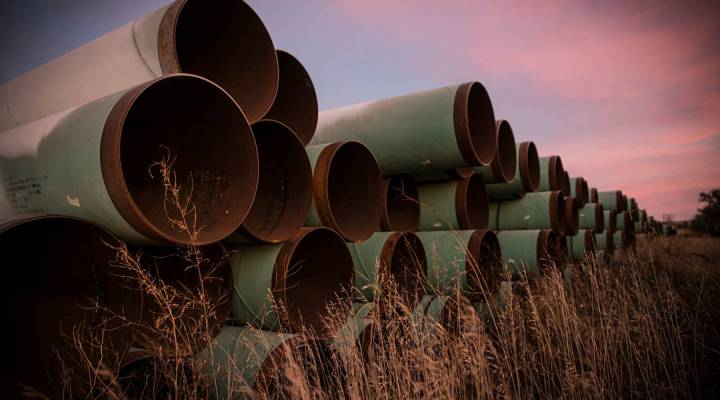
Will Trump’s pipeline order really bring more U.S. steel jobs?
Will Trump’s pipeline order really bring more U.S. steel jobs?

President Donald Trump on Tuesday signed a series of executive orders about oil pipelines. Two orders push for the controversial Dakota Access and Keystone XL pipeline projects to move forward. Another addresses his desire to see pipelines made only of U.S. steel, and still another asks federal agencies to expedite approval processes for infrastructure projects.
“From now on we’re going to start making pipeline in the United States,” Trump said as he signed the order in the Oval Office. “If we build it in the United States, build the pipelines, we want to build the pipe. It’s going to put a lot of workers, a lot of steelworkers back to work.”
But the actual economic effects of his order regarding U.S. steel and iron production are unclear. Dakota Access is almost all built already, about half with U.S. steel, and Keystone XL is expected be about half, too. TransCanada, the company behind Keystone, will also have to resubmit an application for permits in the U.S.
“My understanding is that TransCanada has already purchased the pipe,” said David Goldwyn with Goldwyn Global Strategies. He said requiring pipeline companies to only buy local could also violate WTO agreements and inflate costs.
Tom Seng, who’s a professor of energy business at the University of Tulsa, said imported steel can be cheaper, which means the companies themselves may push back.
“We have imported a lot of steel from China over the last several years,” he said.
And Seng said most of the jobs created by pipelines are short-term.
“You get this temporary strong economic benefit, but then over time, the number of permanent workers, even on a 1,500-mile pipeline, is probably in the hundreds and not the thousands,” he said.
Even with these executive orders, both pipeline projects could also still face permitting and legal hurdles, and public scrutiny. Trump sold his own stock in Energy Transfer Partners, the company behind the Dakota Access pipeline, over the summer. Protests over the project intensified last fall.
The Standing Rock Sioux Tribe, one of the groups opposing the pipeline, said it’s prepared to sue over the president’s executive order.
“President Trump is legally required to honor our treaty rights and provide a fair and reasonable pipeline process,” said Dave Archambault II, chairman of the Standing Rock Sioux Tribe, in a written statement.
The U.S. Army Corps of Engineers in December denied a permit for an easement that would have passed close to the Standing Rock Sioux Reservation in North Dakota, but it remains possible the Army Corps will work with Energy Transfer Partners to find an alternate route for the completion of the pipeline.
There’s a lot happening in the world. Through it all, Marketplace is here for you.
You rely on Marketplace to break down the world’s events and tell you how it affects you in a fact-based, approachable way. We rely on your financial support to keep making that possible.
Your donation today powers the independent journalism that you rely on. For just $5/month, you can help sustain Marketplace so we can keep reporting on the things that matter to you.












